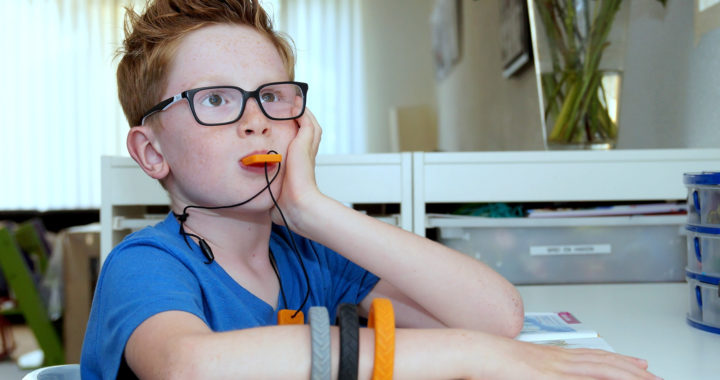When information is collected through the sensory channels, it is transmitted to the brain, interpreted and organised, prior to the individual responding appropriately. This process is called sensory integration. Touch, taste, smell, sight and sound are most frequently referred to as the senses, however the body also senses movement, force of gravity and body position through the muscles and joints. This is referred to as proprioception. Many children and adults with sensory disorders ranging from Autism to Aspergers and even Downs Syndrome do not regulate sensory input well, paying little attention to most things or overreacting to others. When sensory input is not organized or aligned properly, problems in learning, development or behavior may be evident.
One such issue is chewing. This sounds like nothing, but for those with the need to chew, it can be destructive. Chewing and damaging clothes, text books and other items. Standing out for one more thing, which, given the opportunity to have something discreet to fill that need can be reduced. Depending on what people chew it can also be damaging to teeth as it is too hard wearing, or just not safe an ideal as the item may contain chemicals and toxins.
Those who chew, do so to concentrate, block out the world or calm themselves down. Its a need that needs satisfied. There is some controversy around having a specific chewable item. I guess its a bit like dummies and babies, some people like them, some people use them for a short while and some people use them for many years. On the other extreme some people hate them, feeling it encourages dependancy and the wrong behaviours.
Whatever your thoughts, there is no doubt that a good proportion of people with sensory disorders need to chew.
